Preparing the substrate for spawn
- 150g of animal litter (natural, organic, compressed wood)
- 300g of water
- One spoon of starch (potato or manioca)
- 4% of ecologic honey (cane sugar or molasses is also fine)
Dilute the honey and starch into the water, then add it to the wooden bits. Soak the wood litter in water for a while. When the wood is fully absorbed, it doesn’t have to show extra water on the ground, nor dried parts either. Leave it rest for sometime.
Steam sterilize the jar
Put the wooden bits with all the ingredients in a jar (the lid of the jar must have an air filter, see previous articles on how to do it).
In a pot, put some water on the ground, then keep the jar lifted up with some metal structure. turn on the fire and when the water boils, keep the jar to steam-sterilize for about one hour.
Inoculation
The procedure is the same as explained in previous articles: with all the environment clean and the tools sterilized, cut open a piece of Pleurotus Ostreatus mushroom and put some pieces of the internal side of it in to the jar.
Close the lid and keep the jars at about 23 degrees Celsius for a bunch of weeks.
Your jar will be fully colonized when you see the white mycelium running all over it.
Now you have a full jar of spawn ready for the inoculation of your final chosen substrate to grow the mushrooms on.
Enjoy!
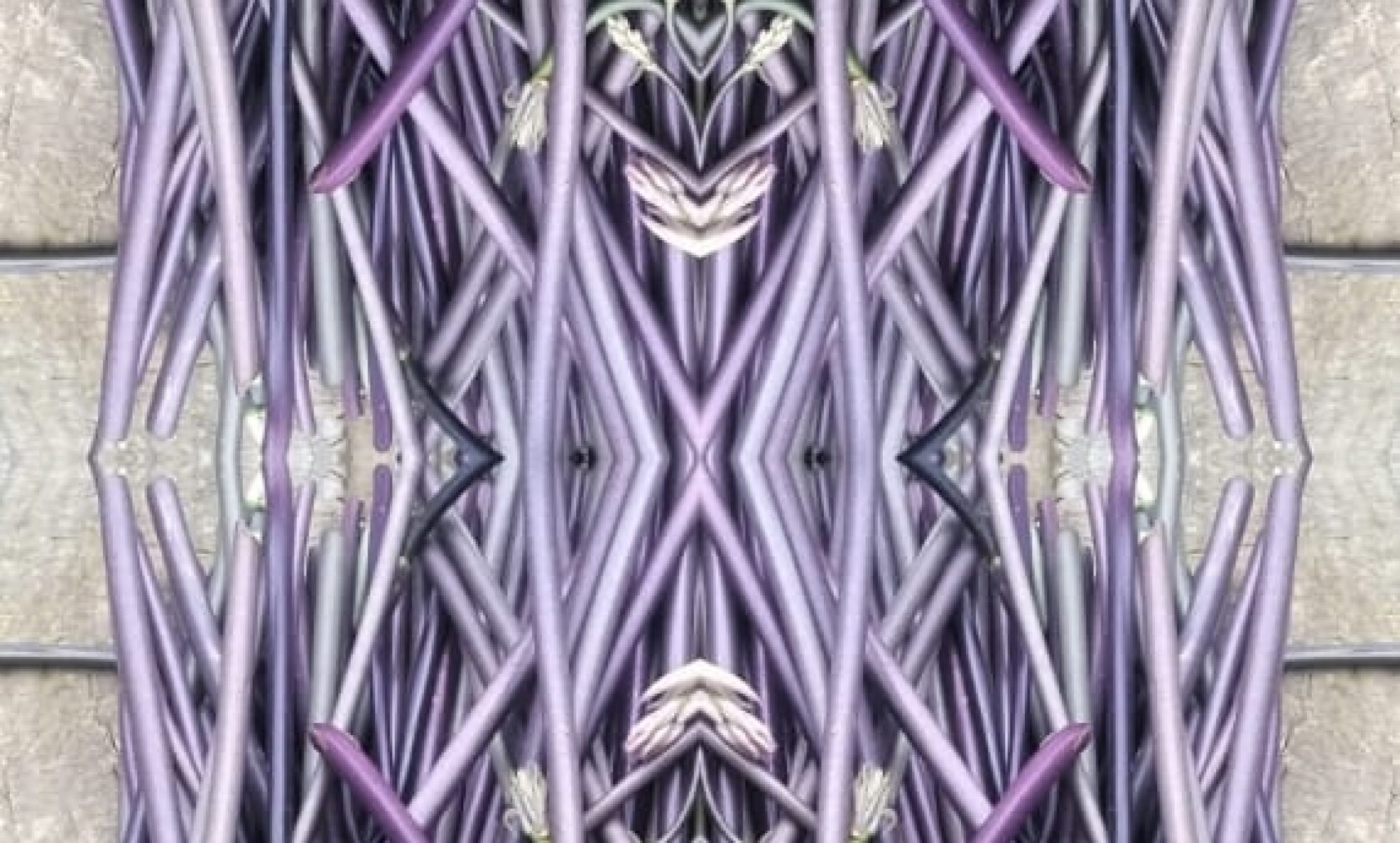

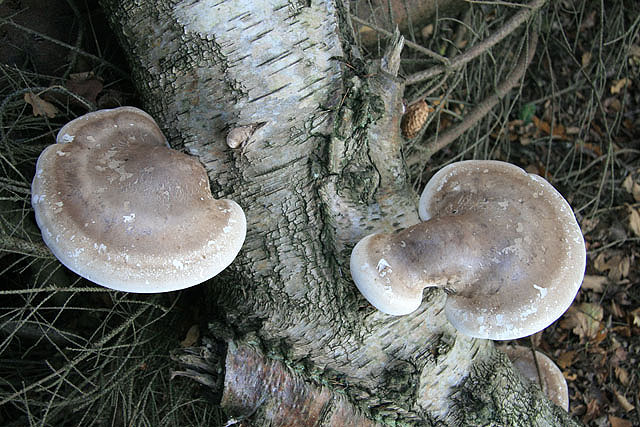

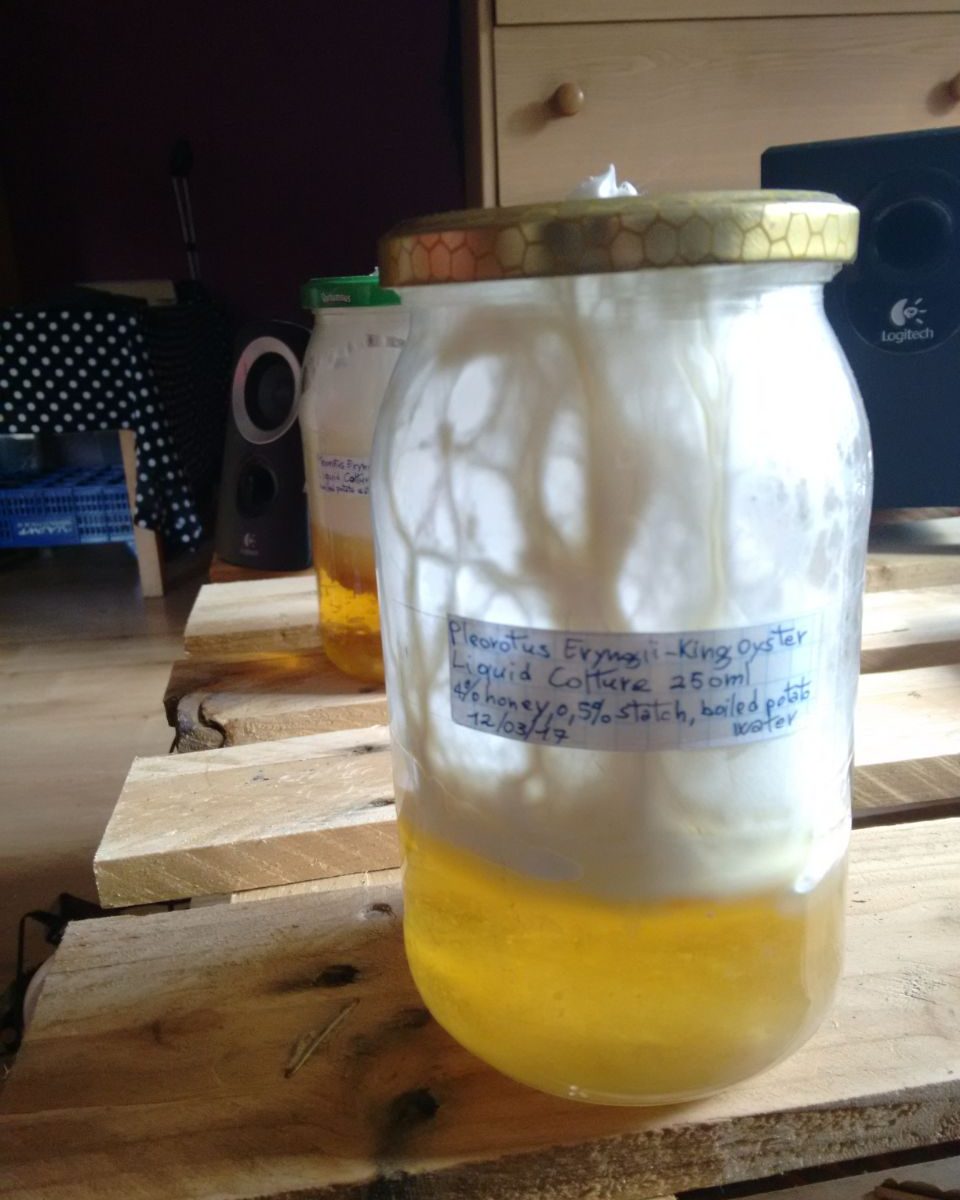
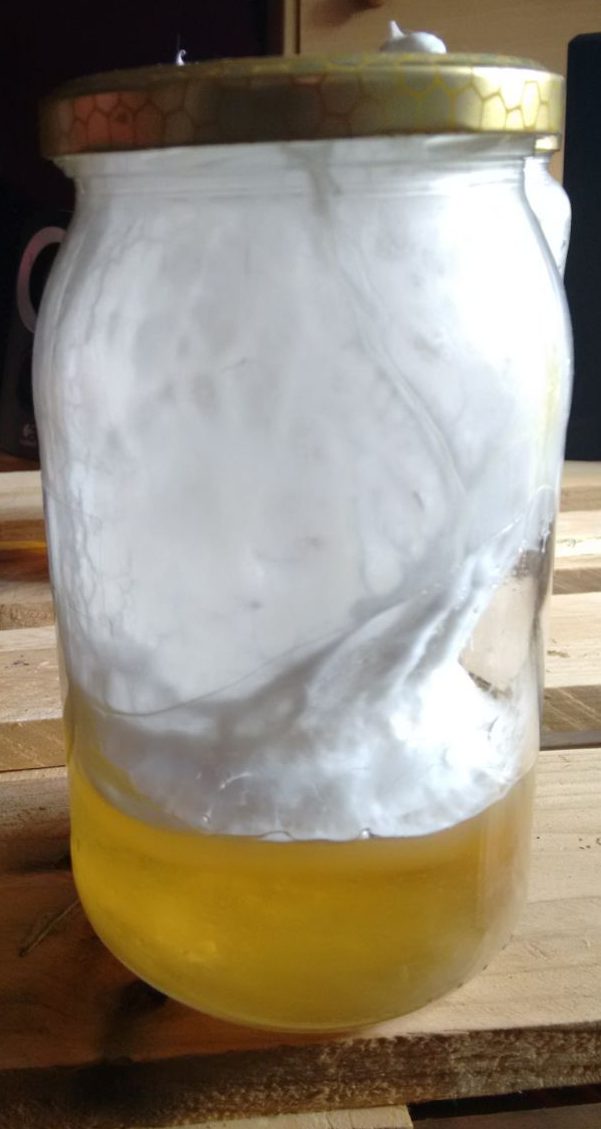
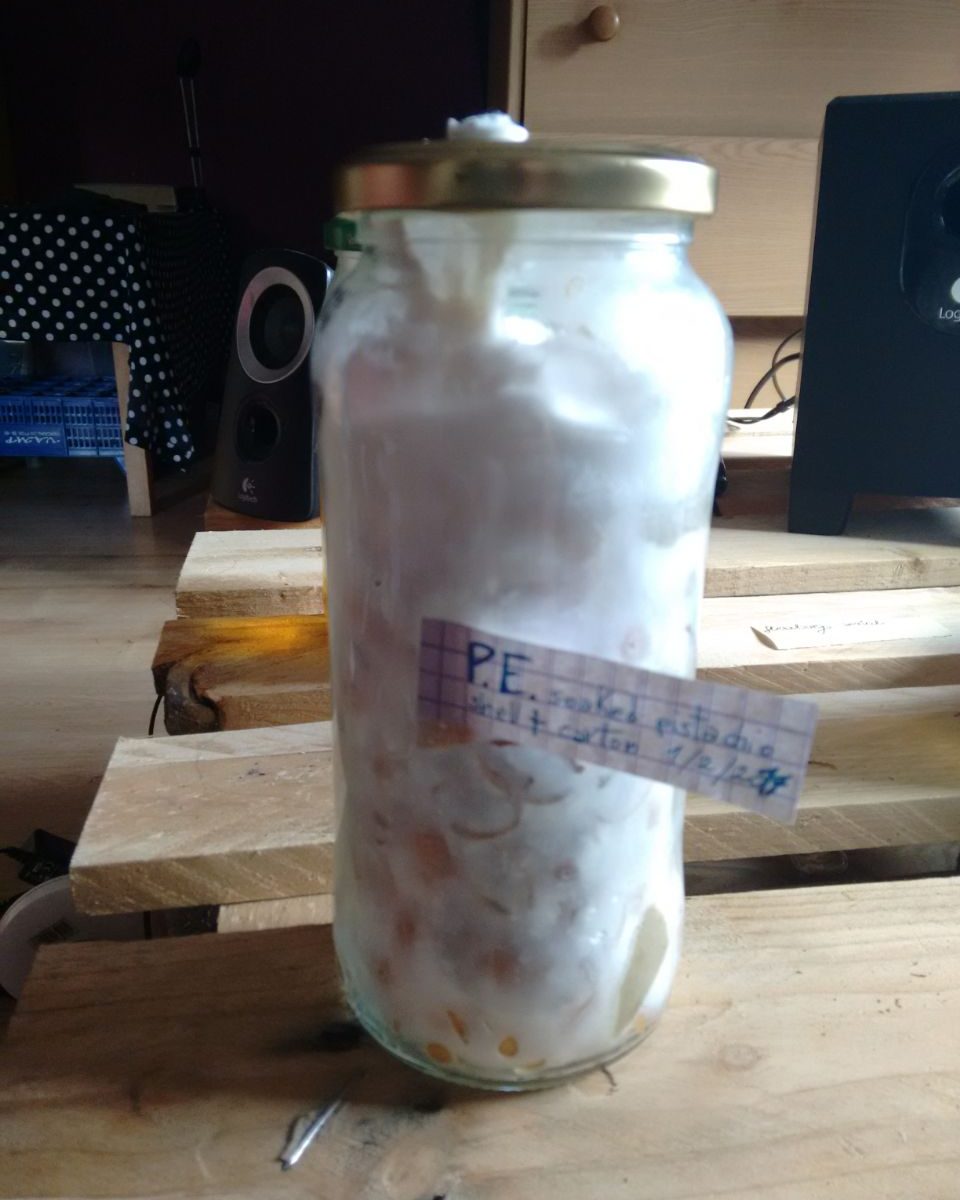
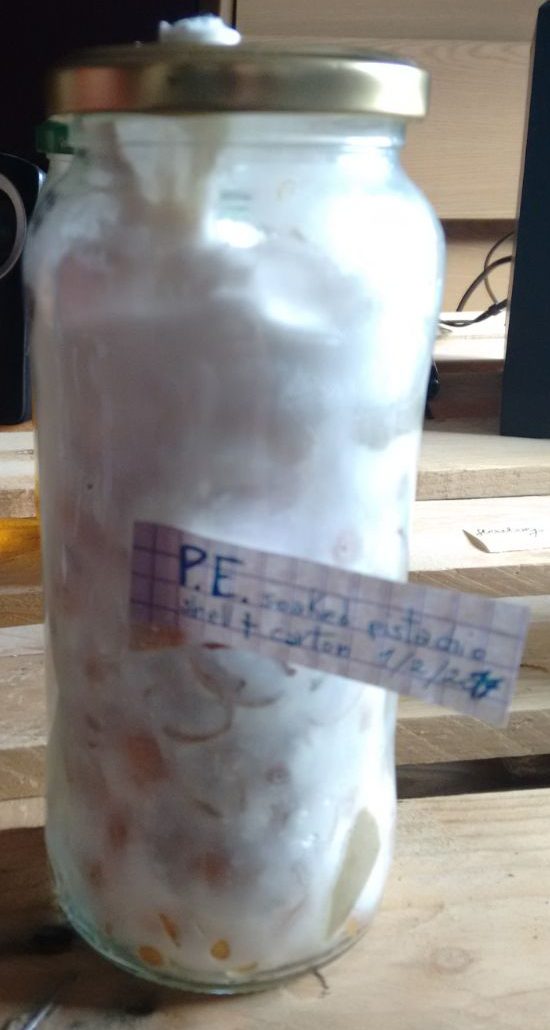
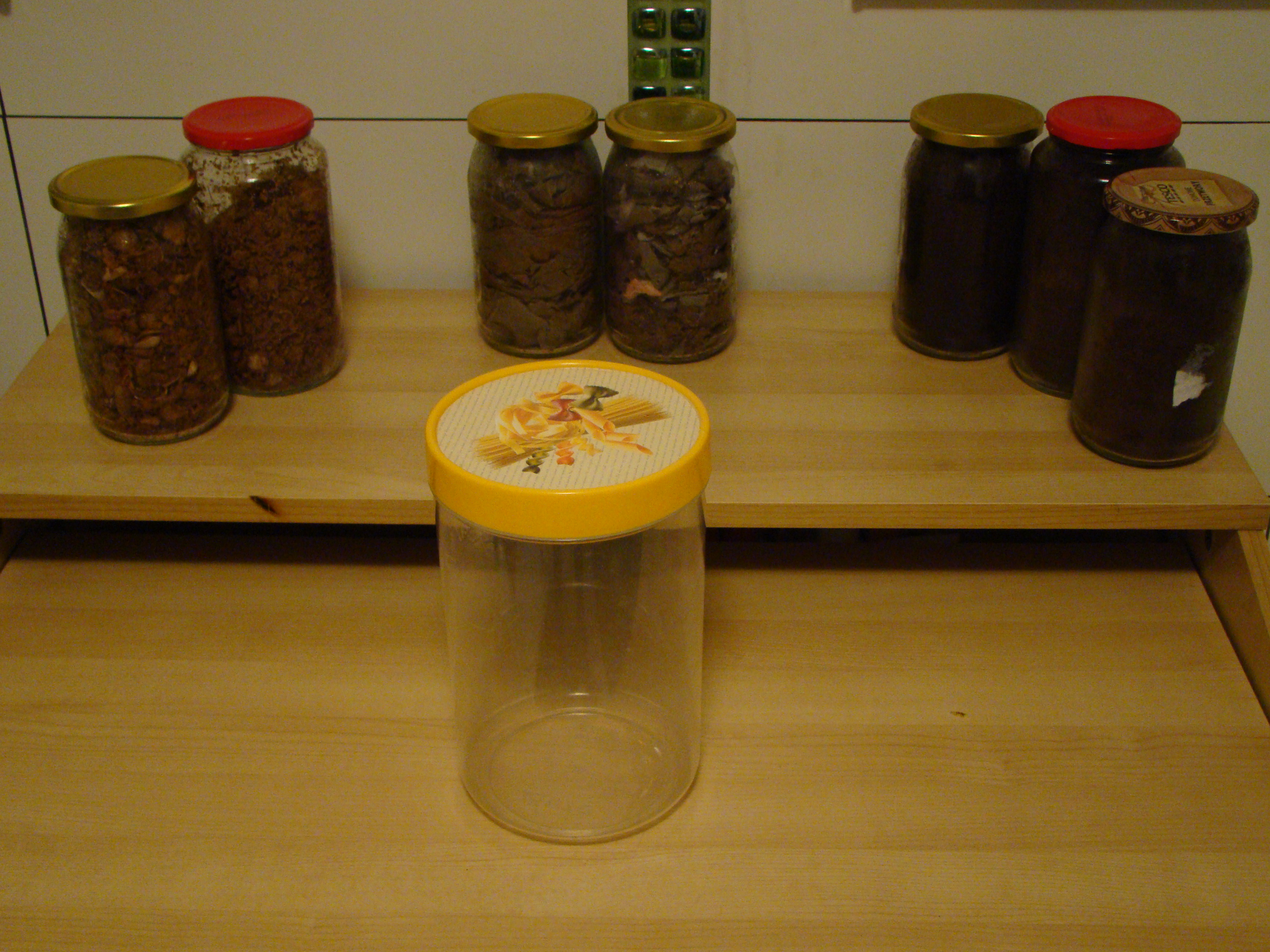
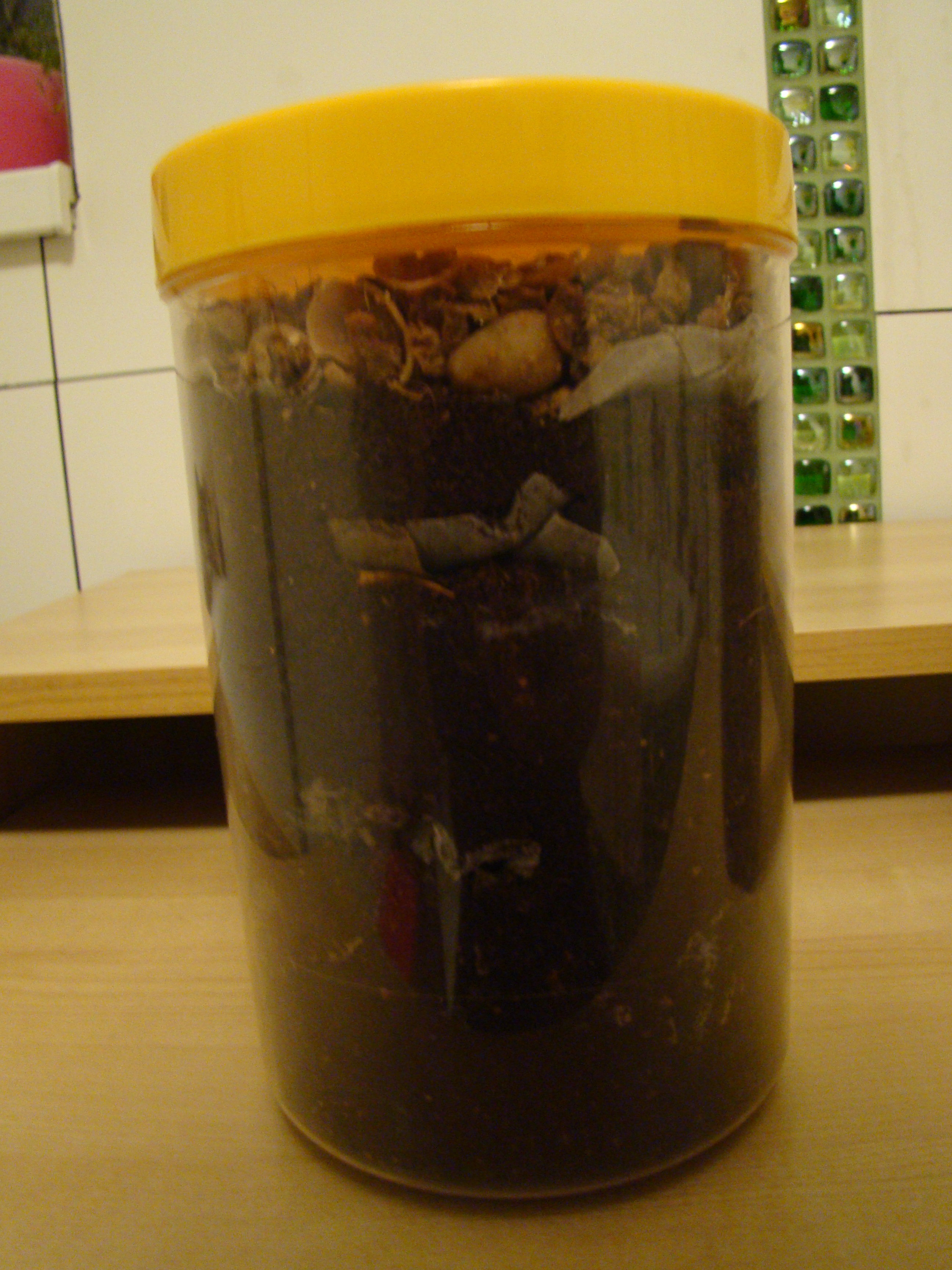
 I used an empty water plastic bottle, made in PET 1 (Polyethylene).
I used an empty water plastic bottle, made in PET 1 (Polyethylene).